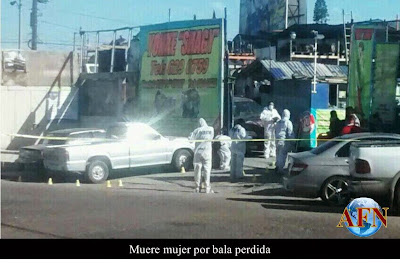Translated by Otis B Fly-Wheel for Borderland Beat from a
Zetatijuana article and additional images from Google
[
Subject Matter: BCS, Sinaloa Cartel, El 28, Los 28Recommendation: Some prior subject matter knowledge would be useful ]
Reporter: Zeta Investigations
Since the start of the narco war for control of the narco trafficking plaza of La Paz, Felipe Eduardo Guajardo Garcia "El 28" has been permanently anonymous.
According to the declarations of staff at SEIDO, narco traffickers, Municipal Police, State Police, and Ministerial Police, knew of his existence uniquely through telephone calls, text messages, but no one knows what he looks like.
The criminals under his command receive instructions via cell phone and are ignorant of the identity of their Boss. Agents of Security never knew who was on the other end of the telephone line, when on various occasions and after the capture of some Sicarios in La Paz, received cell phone calls with death threats made by the principal responsible for the wave of violence that lives in the South Californian Capital.
"I am "El 28", to me you are going to pay, sons of your bitch mothers. When we meet I'm going to fuck your mother, face to face, bitches, and we will see if you are worth dick".
After the capture of Victor Barraza Martinez "El Vidal" or "El Victor", SEIDO opened the investigation previously under the case number PGR/SEIDO/UEIDCS/605/2014, already had information that the detained was "El 28".
However, during his interrogation at SEIDO headquarters and after declaring Victor Barraza Martinez, and five of his accomplices arrested, on November 26th of 2104 in a safe-house in Gilberto Mendoza Street, Civilizadores de la Paz Colonia, it was eventually ruled out that "El 28" had been captured on the night of the operation headed by the Secretary of the Navy, Mexican Army and Attorney General of Justice for the State of Baja California Sur.
Since then, and according to a Federal Agent of Investigation, initiated an investigation to unravel the mystery of his identity and his whereabouts, to stop him and bring him to justice.
Until now and according to the last re-count of ZETA, the wave of violence sums at 99 in total, 53 of those fell in July to December of 2014, 39 in January of this year, 20 of which were in full elections season and 7 more in Los Cabos.
The capture of Juan Antonio Martinez Rosas "El Furby", on 22nd of December of 2014, supplied more information about "El 28" and together with his buddies, during his interrogation at SEIDO headquarters.
"He's white, chestnut hair, short with bald spots, black eyes, wide nose, womans mouth, big ears with and without beard, robust complexion and of medium stature, described "El Furby".
The Sicario agreed to knowing him before, when he arrived in La Paz from Monterrey, Nuevo Leon. He affirmed that he is approximately 35 years of age, he also included the address of a house of his in Pueblo Nuevo Colonia.
Without the necessity of making an impression, the ex State Ministerial Police Agent said he had information that " we have two brothers linked in these criminal activities, one of 40 years of age and another of approximately 28 years of age.
During the Federal investigation, which lasted about six months, investigative Agents of SEIDO managed to achieve major information about the two brothers of "El 28".
According to the official they are as follows:
* Jorge Alberto Guajardo Garcia, 40 years of age with two houses. The first on Avenida Francisco I Madero Oriente number 1334, Centro Colonia in Monterrey, Nuevo Leon, and the second on Calle 5 de Mayo, Centro de Zuazua Colonia, Nuevo Leon.
* Carlos Alberto Guajuardo Garcia, who has an arrest warrant for capture from the DEA for the crime of conspiracy to traffic drugs in McAllen, Texas.
The first of them is described as "tall, thin, white, short hair with bald spots, big ears, big nose, who always wears cowboy boots, piteado belt and hat, and has a marked taste for horse racing".
The second is described at "of medium stature, dark skinned, short hair, large eyebrows, big ears, big moustache, round face with pimples.
The network of linksThe investigation conducted by Federal Agents revised details of crimes and captures, and gained major information gleaned from telephones and computer tech, seized from 30 sicarios detained and subject to penal process in La Paz, Nayarit and Jalisco.
According to the Agent, " the calls and text messages of death threats to Municipal Police, State Police, and Ministerial Police, were made from a cell phone in Monterrey, Nuevo Leon with the number 811-852-1252".
After six months of investigation they could establish that:
* Jorge Alberto Guajardo Garcia, is presumably the leader of the group of criminals "Los 28" and contacts direct to Damaso Lopez Nunez "El Licenciado" and Damaso Lopez Serrano "El Mini Licenciado". He operates from Monterrey, Nuevo Leon and displaces constantly to El Dorado, Culiacan, La Paz and Los Cabos. He has under his dominion the trafficking of drugs that leave Neuvo Leon, Tamaulipas, and Coahuila, and lately the frontier with Texas, United States.
* Felipe Eduardo Guajardo Garcia "El 28" is responsible for the criminal operations of his older brother, who at present is fighting for the Plazas of the South Zone against " Los Pepillos" and against "Los Mayitos" in the North Zone of La Paz, and is planning to fight for the Plaza of Los Cabos.
In the records of the few sicarios willing to speak, that said they recognised him by sight, describes him as the person who order the murders of rivals, who they identify as "El 28", who lives in La Paz and is moving into Los Cabos.
Carlos Alberto Guajardo Garcia is responsible for logistics and supply of arms to Coahuila and Tamaulipas, as well as controlling sicarios in Sinaloa, Sonora, La Paz and Los Cabos.
An Agent of the Group for Coordination of Public Security of Baja California Sur, recognised that the group of criminals of "El 28" for now are the most violent, because they were schooled in Tamaulipas, Coahuila and Nuevo Leon.
In the last crime map, elaborate the Federal Authorities and Military, Felipe Guajardo Garcia figures as the criminal boss of the cells headed by the following sicarios:
* Melissa Margarita Calderon Ojeda "La China", armed wing in La Paz
* Raul Castillo de la Rosa "El Cochi", armed wing in Los Cabos
* Alejandro Carrasco Torres "El Oso" or "El Enano", who allegedly arrived as reinforcement for criminal activities of the first two cells.
It should be noted, that Alejandro Carrasco Torres "El Oso" and his accomplices were detained on 1st of May by Agents of the PEP ( State Preventative Police) and the PGJE , while circulating armed aboard a vehicle around the Avenue Padre Kino and Miguel L Legaspy, in the Colonia Los Olivos de La Paz.
The sicario was carrying a nine mm pistol in his belt, and he was with another sicario identified as Everado Garcia Silva, originally of Culiacan, Sinaloa. They were travelling in a silver colored Nissan Juke, registration plates CZR-7679, this is a tall vehicle and after a search the weapon was detected.
The two detained, the weapon and the vehicle were put at the disposition of the PGR.
However, Alejandro Carrasco Torres "El Oso" and his accomplice were freed one day after, under strong suspicion of corruption, and on the morning of 4th of May were attacked and shot around 04:30 in a marked safe house number 2717 Calle Venustiano Carraza, between Antonio Navarro and 5th of February, in the Los Olivos de La Paz Colonia.
In the attack three sicarios died from "El Oso's" cell they were identified as:
* Everado Garcia Silva, 36 years of age, with previous prison terms on his record in Ensenada and San Quintin, Baja California for crimes against health, according to the records of the PGR.
* Humberto de la Rosa Rubio, with previous prison time in Culiacan, Sinoloa for crimes against health.
* Martin Aboytes Zavala, recently liberated from the Centre for Social Reinsertion of Los Mochis, Sinaloa, after completing a stretch for crimes against health.
At the crime scene, the PGJE found spent cartridges in calibre 9mm, .223 winchester, and 7.62 x 39, a magazine for a .40 calibre pistol, and six magazines for .223 winchester ( used by AR-15), as well as a .40 calibre pistol and an AR-15 assault rifle.
In a similar manner, a corpse of a woman was discovered in a breach of earth works in El Manuel Colonia, in the South of La Paz, according to a medical assistant she was tortured and was beaten and strangled . She was identified as Elsa Tomaso Cervantes Ancheta, 26 years of age, with previous history of crimes against health.
Original article in Spanish at
ZetatijuanaOtis: its seems that someone tried to intercept and or buy every edition of Zeta containing this article in Los Cabos. Seems like El 28 didn't want this information to hit the streets.




























.jpg)


























